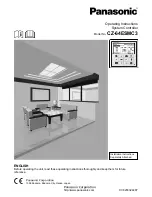
ZENN
iO
AVANCE Y TECNOLOGÍA
vwww.zennio.com
21
21
used to set those values and to make IRSC-Zone be aware of them. It recommended, however, to
enable sending the statuses to the bus on start-up, so that the actual status of the grilles matches at
any time the one assumed or calculated by the controller, for example, after a download.
Important!
If initial sendings on bus recovery are enabled from the Reset window and also the
“Zone Update on Start-up” parameter from the General window has been enabled as well, special
attention must be paid while setting the delays of both parameters. Since the purpose of enabling
the latter is that IRSC-Zone requests status information from the KNX installation, it would not make
sense that, prior to this, IRSC-Zone had already sent status information to the KNX bus, since this
would overwrite the actual status of the installation with the default values the device acquires after
a download or an ETS reset. Because of this, the delays in the Reset window should be greater
than that parameterized for the
“Zone Update on Start-up” parameter.
Note:
If one or more particular objects do not get a response to the read request, they will maintain
their default values. On the other hand, if IRSC-Zone does receive a response to the read request
of the ON/OFF, Setpoint and Reference Temperature objects before having the response to the
read request of the Mode object, the calculation of the general setpoint and the grille control will
begin initially assuming the default mode (Cool). If afterwards a response is received to the Mode
request and it turns to be other than Cool, this control will be restarted and, typically, new sendings
to the unit will take place, as well as, if needed, a change in the grille status.









































